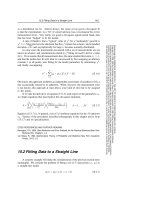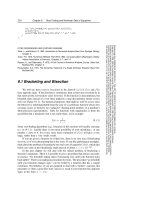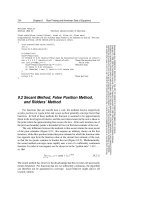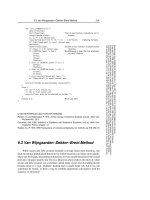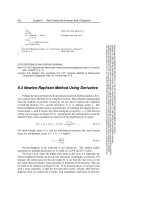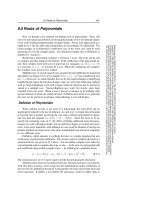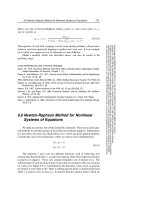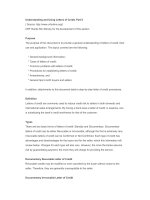Chapter 078. Prevention and Early Detection of Cancer (Part 3) doc
Bạn đang xem bản rút gọn của tài liệu. Xem và tải ngay bản đầy đủ của tài liệu tại đây (17.42 KB, 6 trang )
Chapter 078. Prevention and Early
Detection of Cancer
(Part 3)
Cancer Chemoprevention
Chemoprevention involves the use of specific natural or synthetic chemical
agents to reverse, suppress, or prevent carcinogenesis before the development of
invasive malignancy.
Cancer develops through an accumulation of genetic and epigenetic
changes that are potential points of intervention to prevent cancer. The initial
changes are termed initiation. The alteration can be inherited or acquired through
the action of physical, infectious, or chemical carcinogens. Like most human
diseases, cancer arises from an interaction between genetics and environmental
exposures (Table 78-1). Influences that cause the initiated cell to progress through
the carcinogenic process and change phenotypically are termed promoters.
Promoters include hormones such as androgens, linked to prostate cancer, and
estrogen, linked to breast and endometrial cancer. The distinction between an
initiator and promoter is sometimes arbitrary; some components of cigarette
smoke are "complete carcinogens," acting as both initiators and promoters. Cancer
can be prevented or controlled through interference with the factors that cause
cancer initiation, promotion, or progression. Compounds of interest in
chemoprevention often have antimutagenic, antioxidant, anti-inflammatory,
antiproliferative, or pro-apoptotic activity (or a combination).
Table 78-1 Suspected Carcinogens
Carcinogens
a
Associated Cancer or Neoplasm
Alkylating agents Acute myeloid leukemia,
bladder
cancer
Androgens Prostate cancer
Aromatic amines (dyes) Bladder cancer
Arsenic Cancer of the lung, skin
Asbestos
Cancer of the lung, pleura,
peritoneum
Benzene Acute myelocytic leukemia
Chromium Lung cancer
Diethylstilbestrol (prenatal) Vaginal cancer (clear cell)
Epstein-Barr virus
Burkitt's lymphoma, nasal T cell
lymphoma
Estrogens
Cancer of the endometrium, liver,
breast
Ethyl alcohol
Cancer of the liver, esophagus,
head and neck
Helicobacter pylori
Gastric cancer, gastric MALT
lymphoma
Hepatitis B or C virus Liver cancer
Human immunodeficiency virus
Non-
Hodgkin's lymphoma,
Kaposi's sarcoma, squamous cell
carcinomas (especially of the urogenital
tract)
Human papilloma virus
Cervix cancer, head and neck
cancer
Human T cell lymphot
ropic
virus type I (HTLV-I)
Adult T cell leukemia/lymphoma
Immunosuppressive agents
(azathioprine, cyclosporine,
glucocorticoids)
Non-Hodgkin's lymphoma
Nitrogen mustard gas
Cancer of the lung, head and neck,
nasal sinuses
Nickel dust Cancer of the lung, nasal sinuses
Phenacetin
Cancer of the renal pelvis and
bladder
Polycyclic hydrocarbons
Cancer of the lung, skin (especially
squamous cell carcinoma of scrotal skin)
Schistosomiasis Bladder cancer (squamous cell)
Sunlight (ultraviolet) Skin cancer (
squamous cell and
melanoma)
Tobacco (including smokeless)
Cancer of the upper aerodigestive
tract, bladder
Vinyl chloride Liver cancer (angiosarcoma)
a
Agents that are thought to act as cancer initiators and/or promoters.
